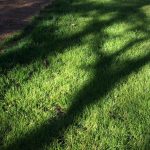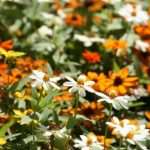Perennials
Full of color, texture, and shapes, often providing food and cover for the birds and the bees, there are hundreds of these beauties you can select for your perfect garden.

Texas Tough and Pretty
Perennials are the backbone of any WaterSaver garden. Most of the plants you include in a garden will likely be perennials.
Less Water and Fertilizer
Native and well-adapted perennials do not require additional water and fertilizer.
Many perennials get their hardiness from establishing a large root system. It may take a few years to get to their full height. An old saying for perennials is “The first year they sleep, the second year they creep and the third year they leap.” A little patience will pay off.
May Need Pruning Annually
Perennials generally have the ability to bounce back after a period of drought and freeze. In time of drought stress or frost, they may drop their leaves and remain dormant until the next growing season. You can prune back the deadwood and the plant will return from its roots.
PERENNIAL CHARACTERISTICS
- Lives from year to year
- Gardeners often refer to plants with soft stems as perennials, although woody plants like trees are also technically perennials.
ADDED CO-BENEFITS
- Perennials provide great benefits in the form of fruits and flowers with nectar and pollen. They also provide nesting material for desirable wildlife such as birds.
- Properly maintaining perennials can reduce the carbon footprint of the home as plants sequester carbon in their living tissues. Additionally, less fossil fuel is used to maintain perennials when compared to the mowing requirements of turfgrass.
Related Video

Related Article






